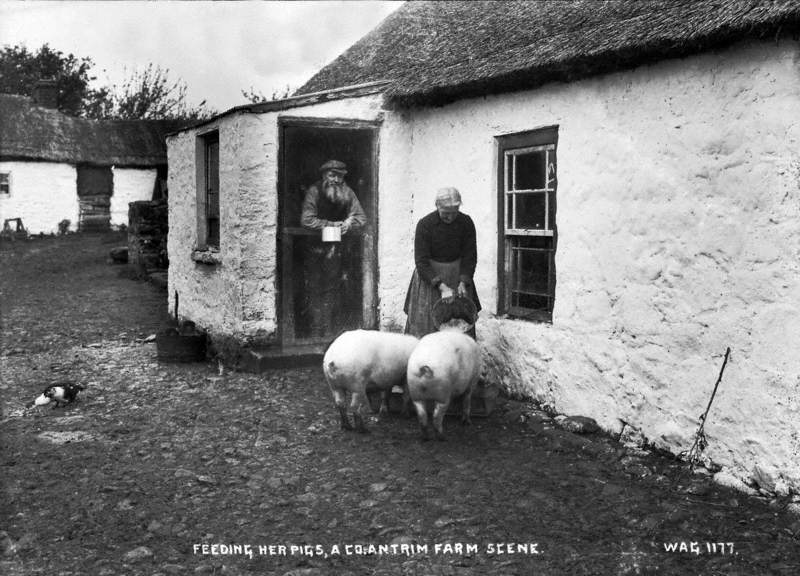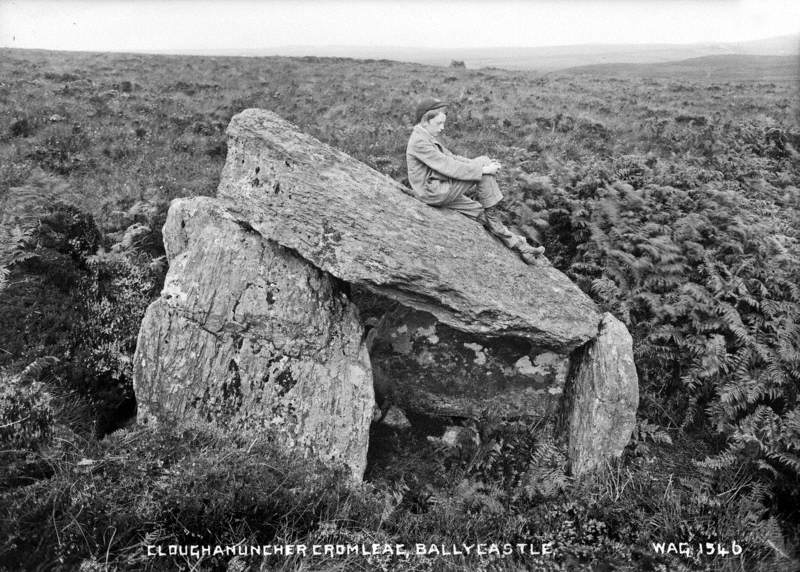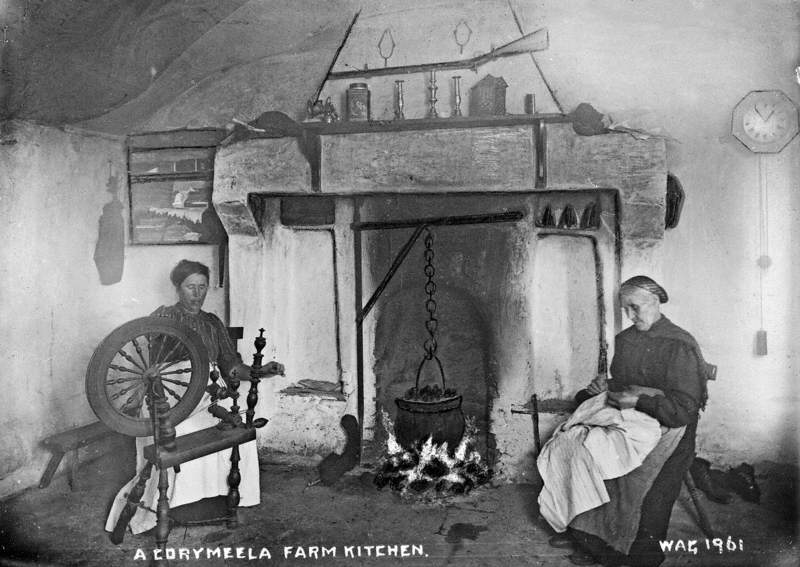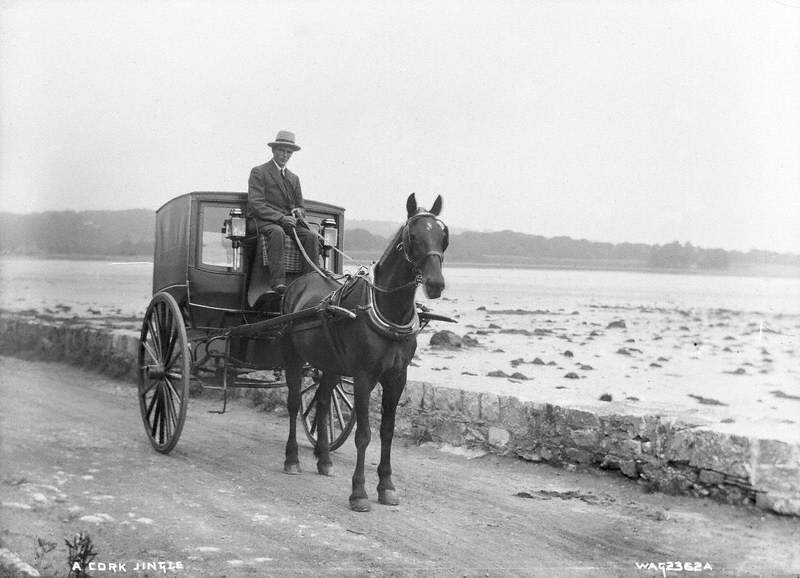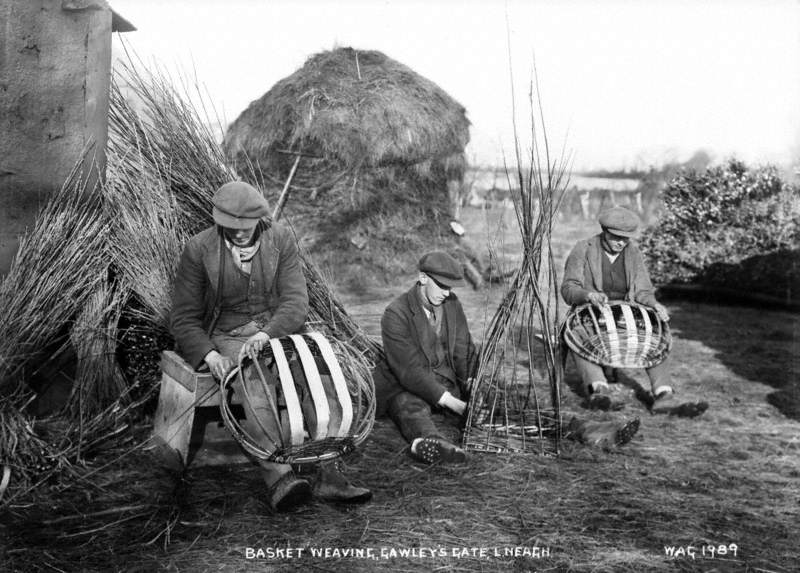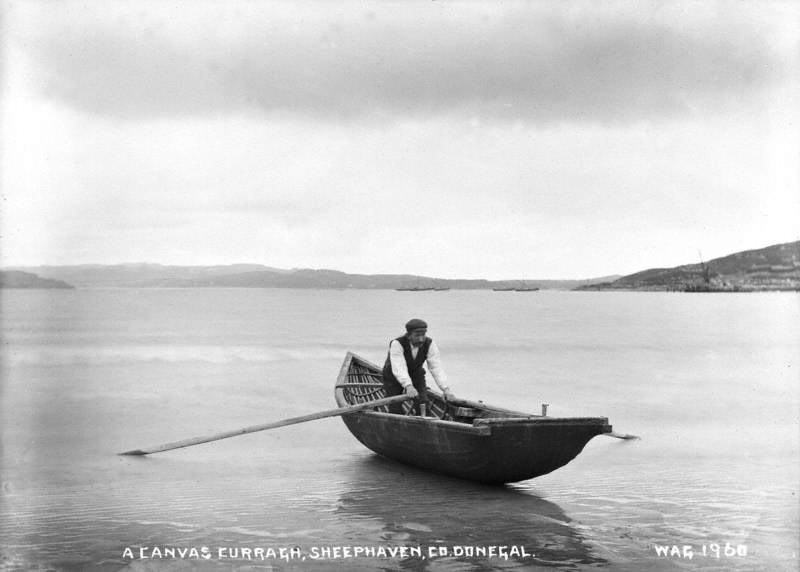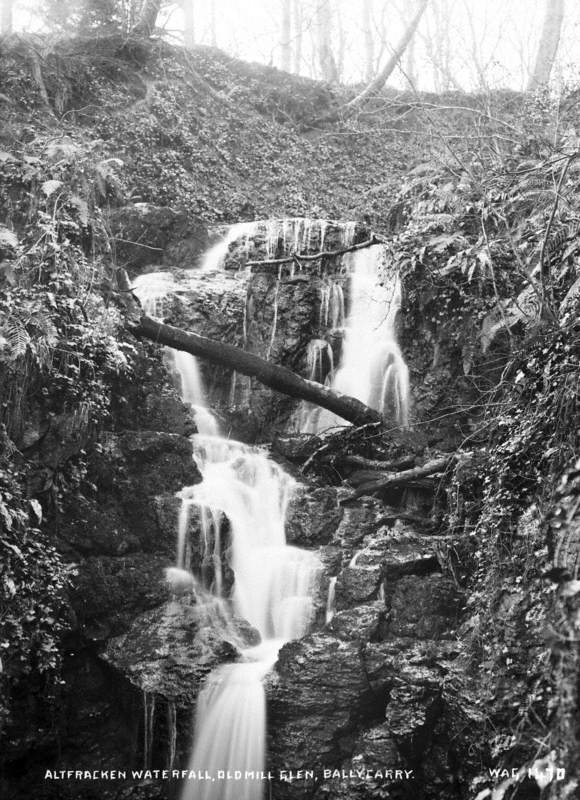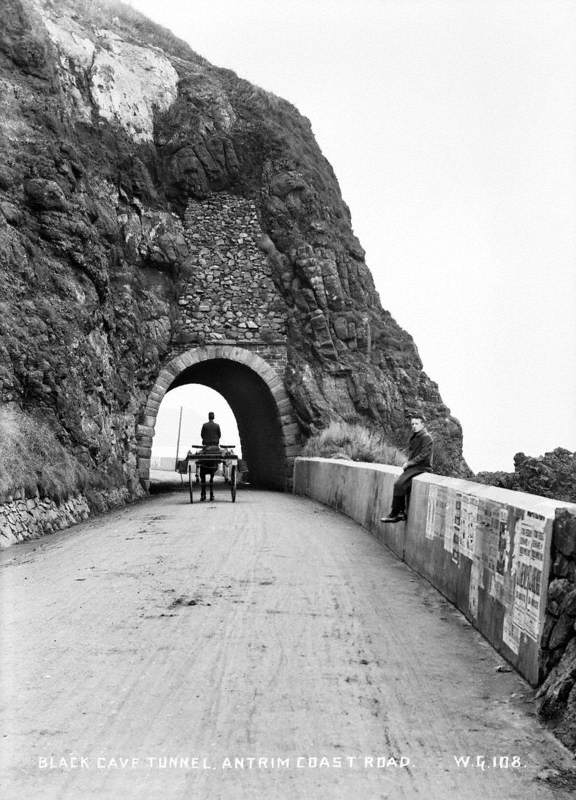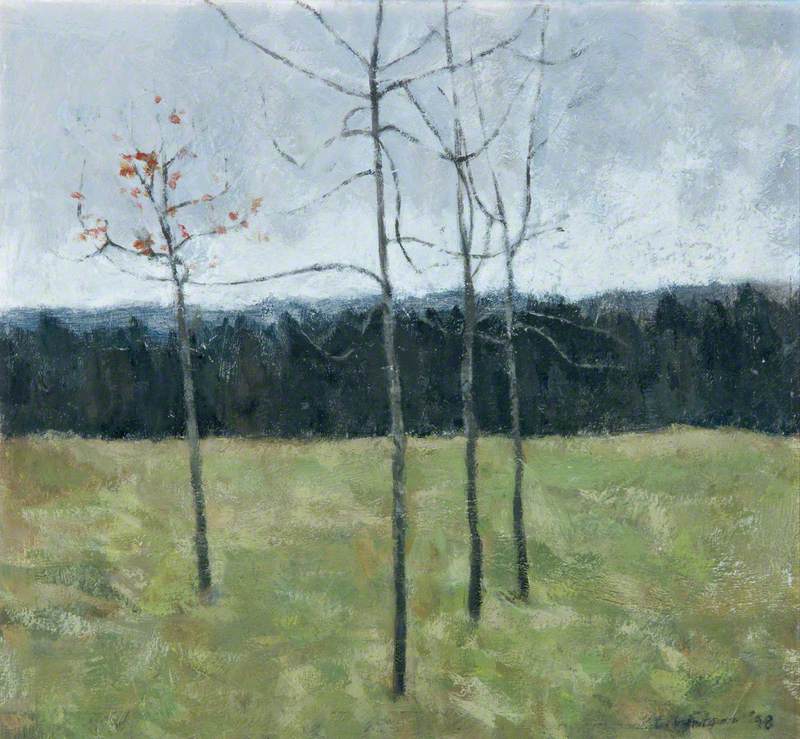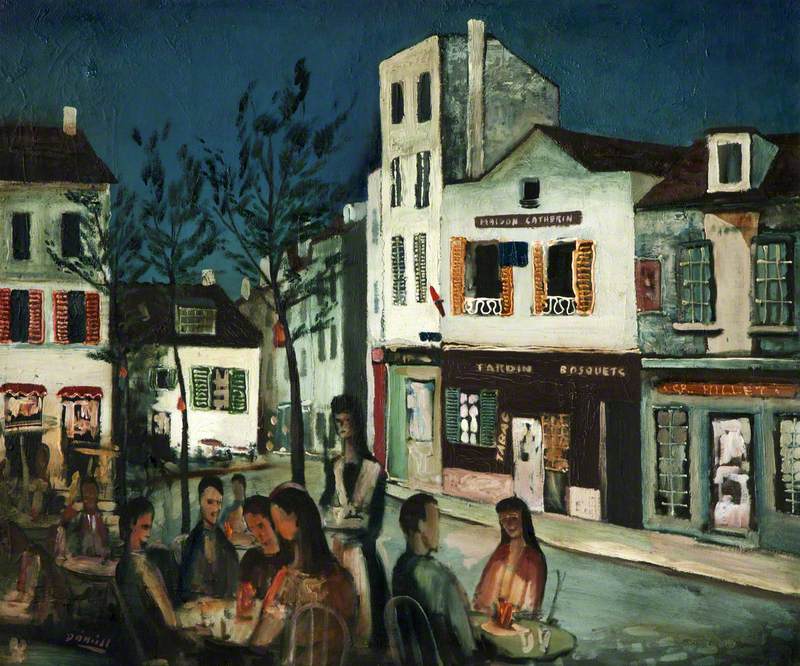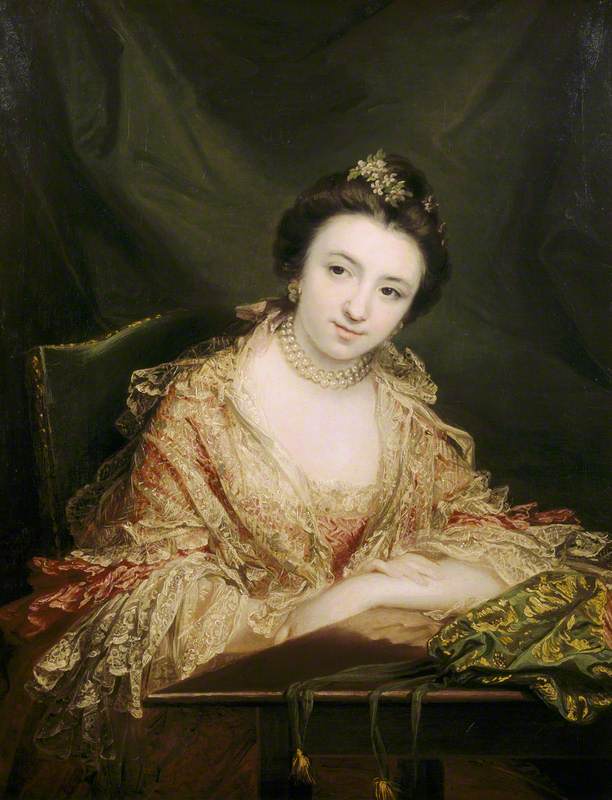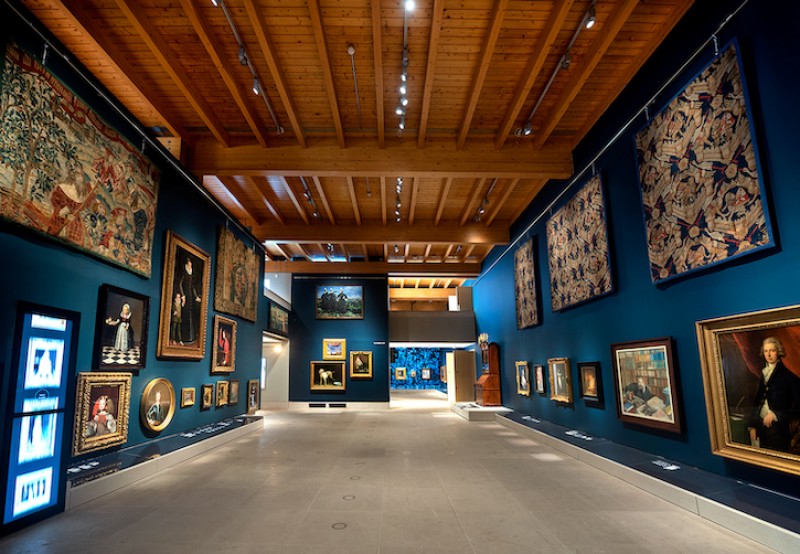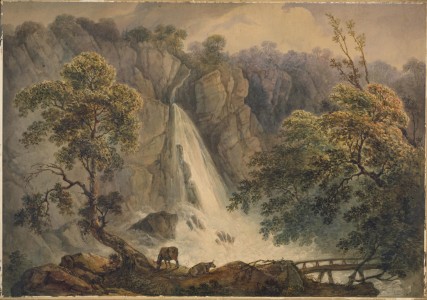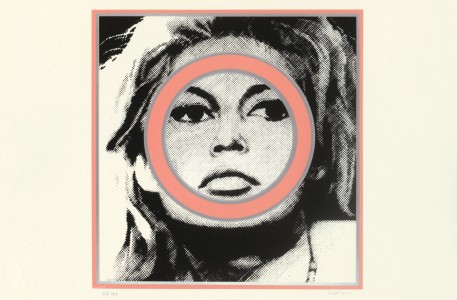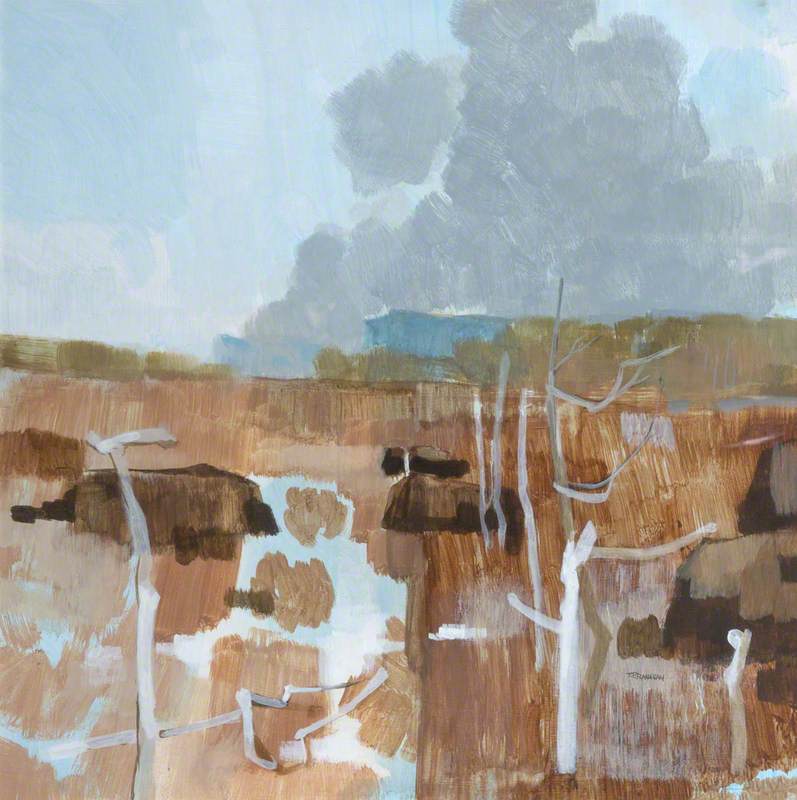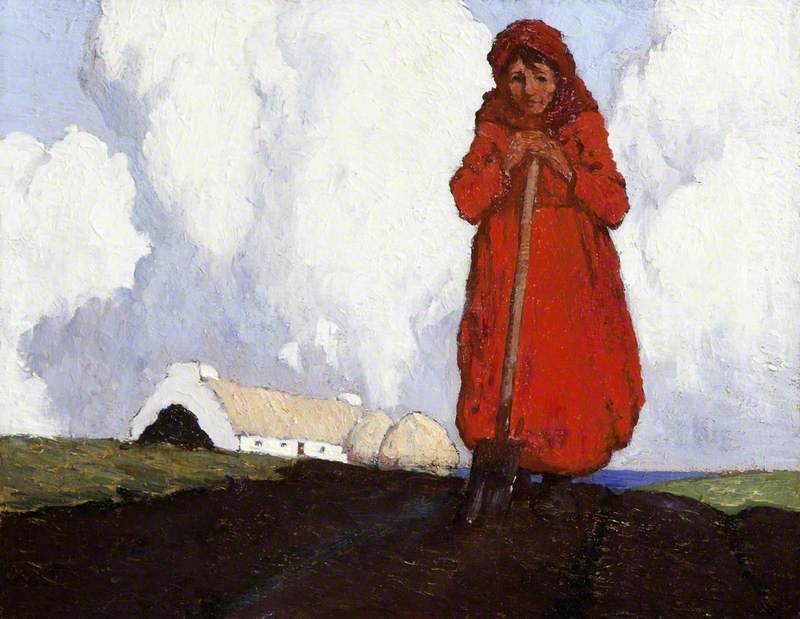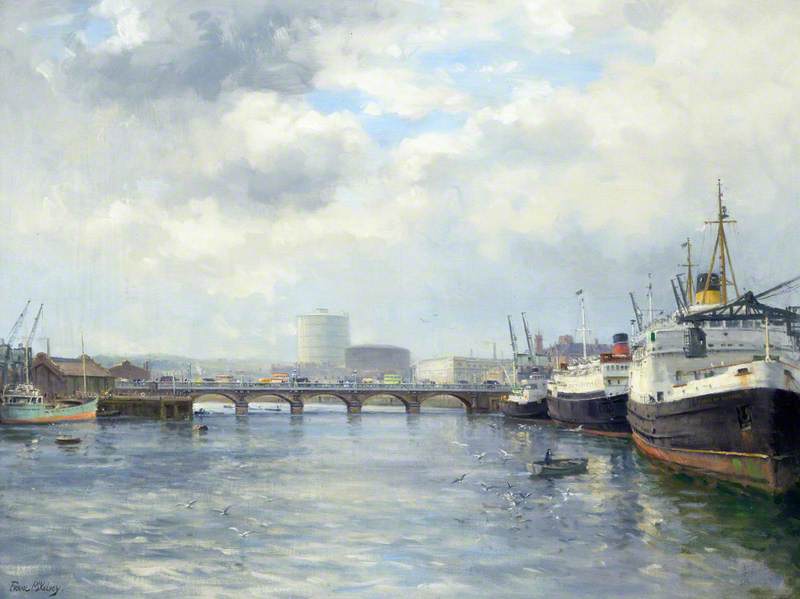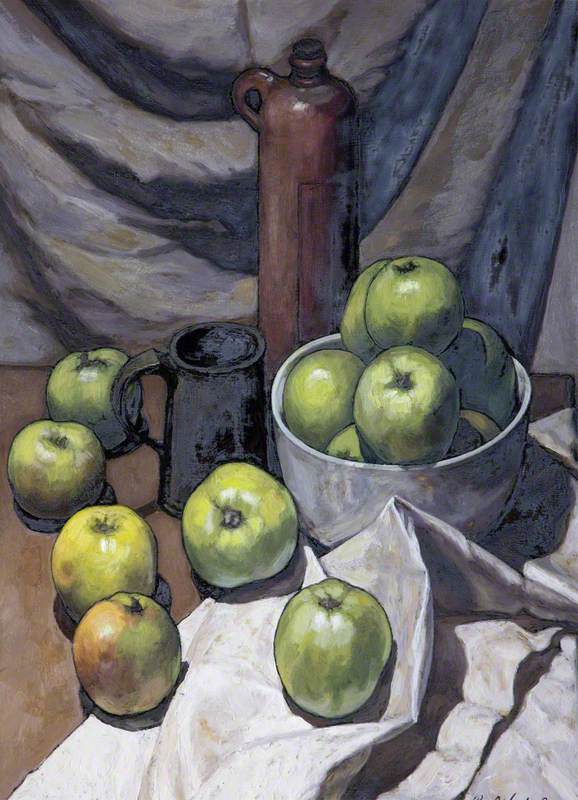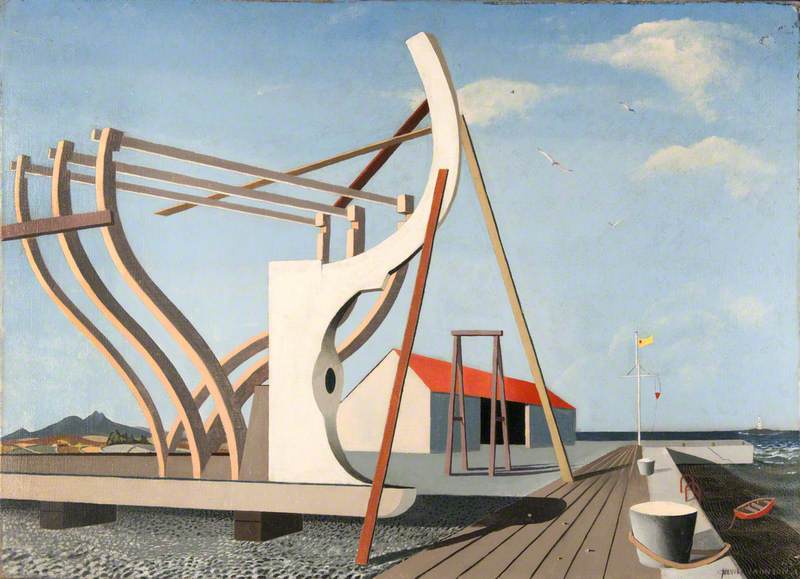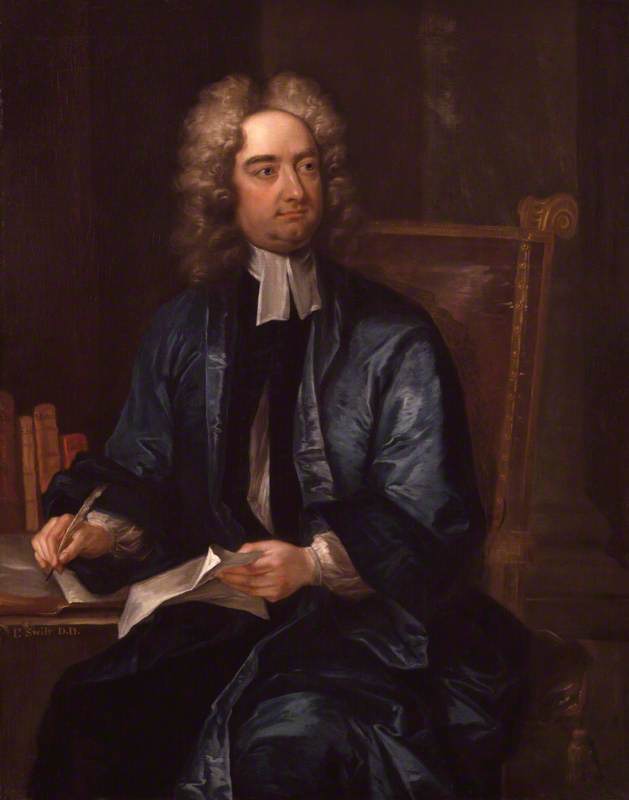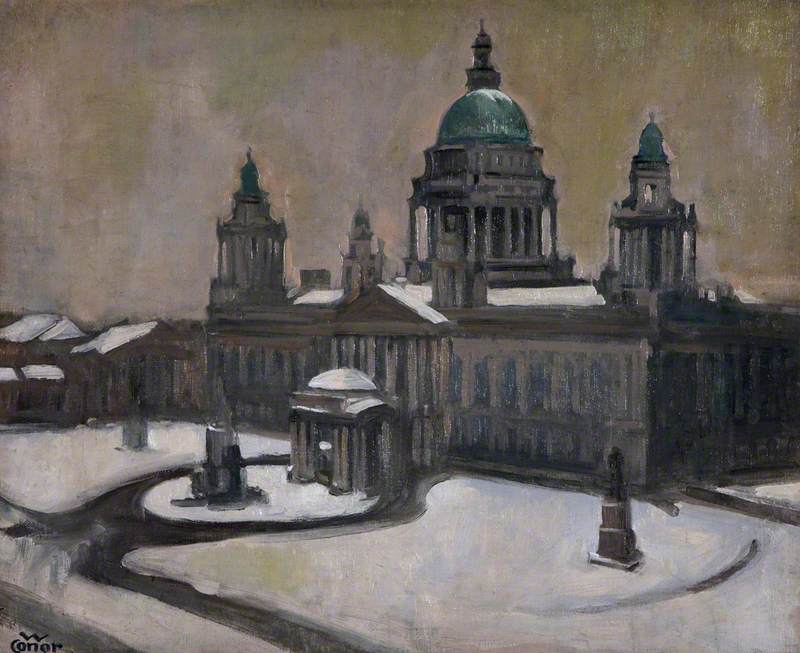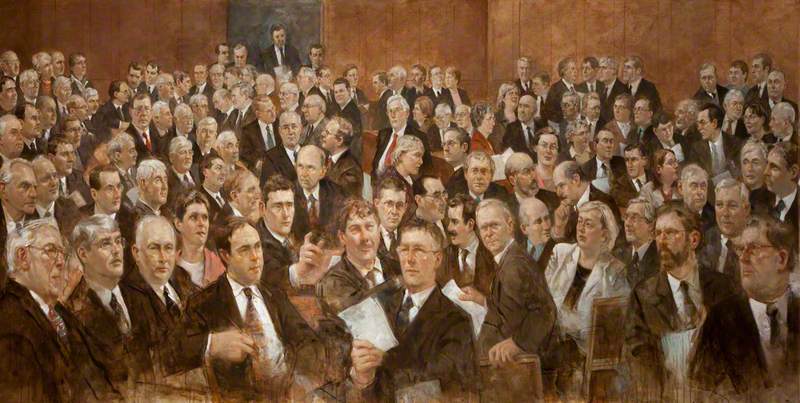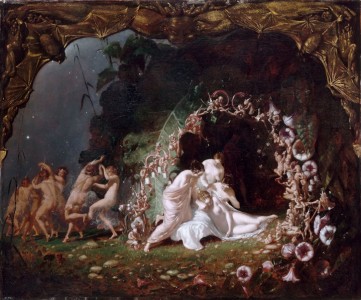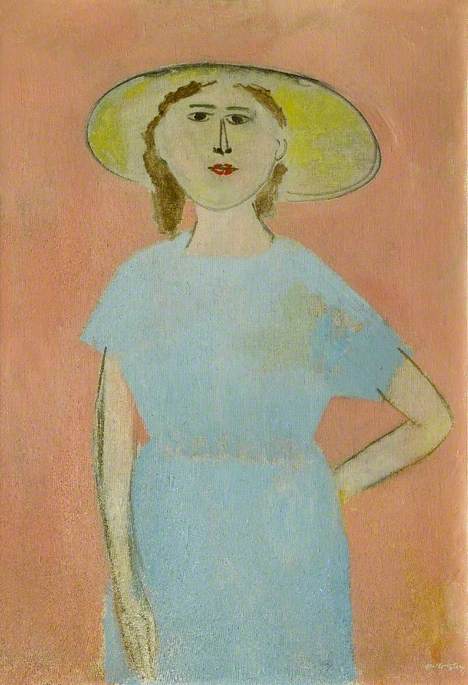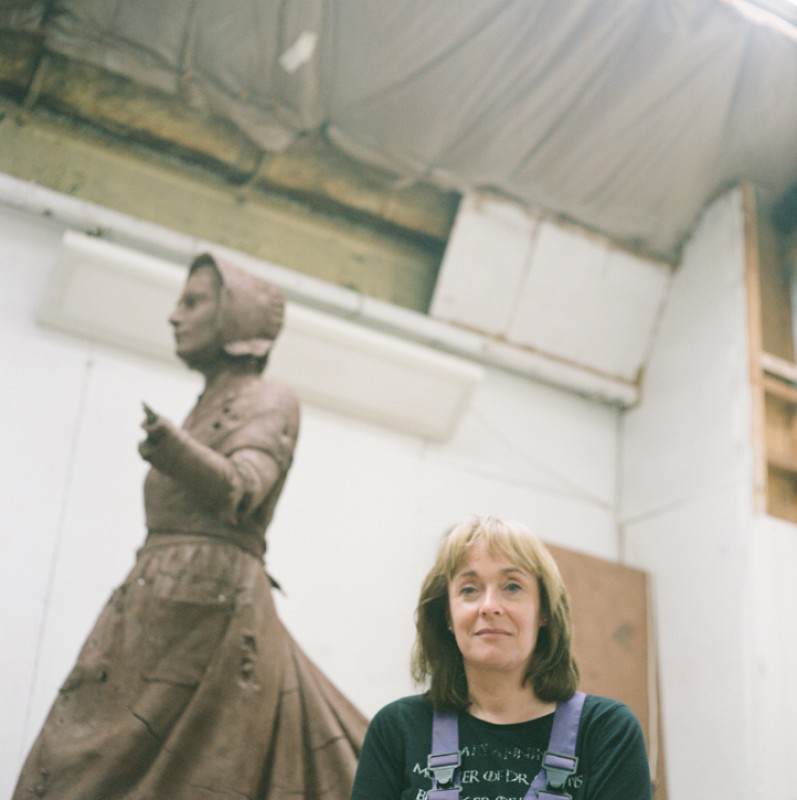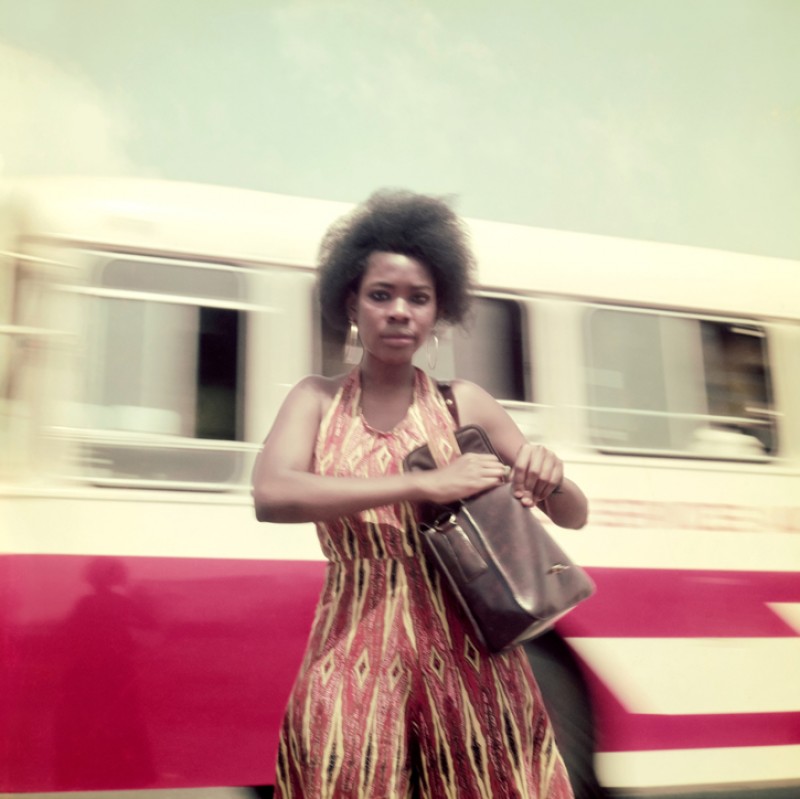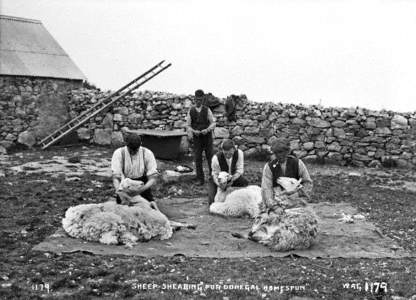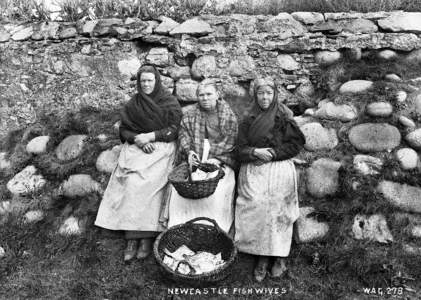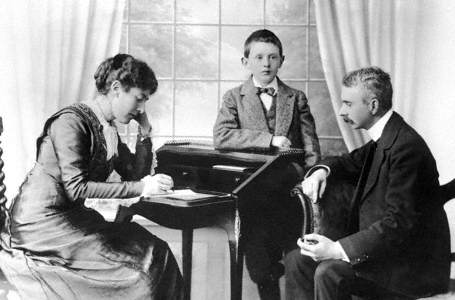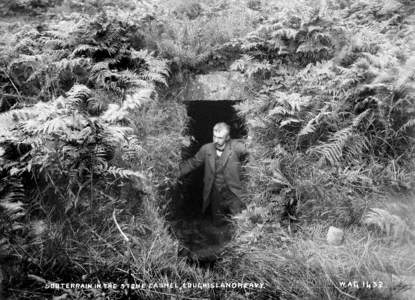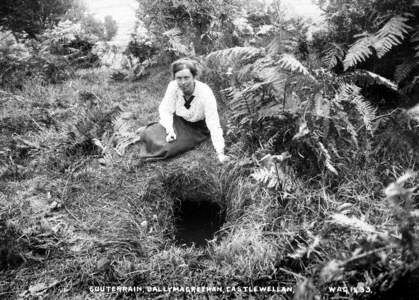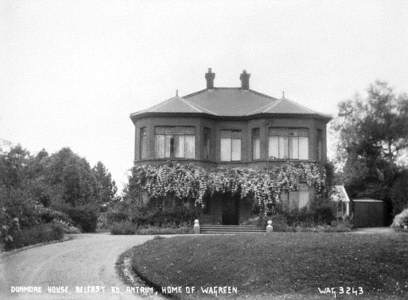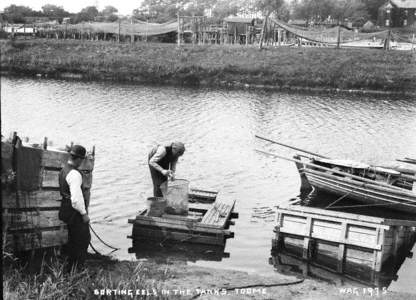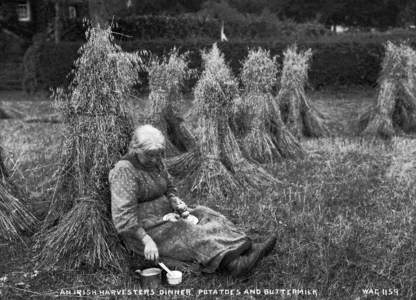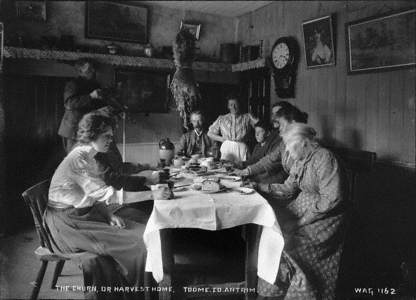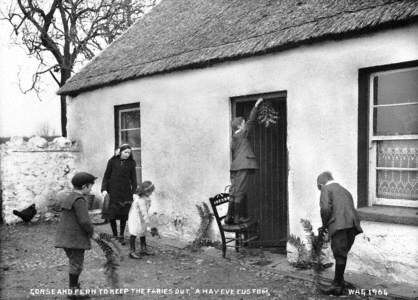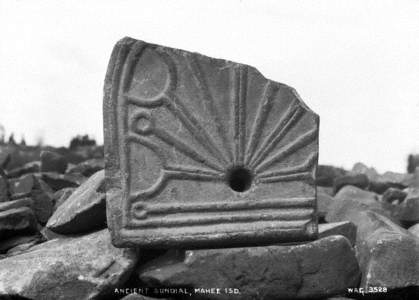The W. A. Green Collection dates from c.1880 to c.1940. It was acquired by the Ulster Folk Museum in the early 1960s, and consists of approximately 4,000 glass plate negatives, original prints, lantern slides and published series of views.
Sheep Shearing for Donegal Homespun
William Alfred Green 
The collection contains material of topographical, archaeological, industrial and transport interest. However, it is particularly strong in regard to images of agriculture, rural life, crafts and pastimes of the north of Ireland.
William Alfred Green was born into a Quaker family in Newry, County Down, in 1870. He was the only child of Thomas Green and Eliza (née Allen). Thomas's father William, a farmer, was the eldest brother of Forster Green, a Belfast tea and grocery merchant. Thomas followed a similar path to his uncle Forster, establishing a tea and grocery business in Newry.
William was a boarder at Friends' School in Lisburn. The earliest dated photograph in the collection is from 1887, which suggests that William's passion for photography started in at least his teens.
Having lost both of his parents by the time he was 20, he was apprenticed to the grocery business of his granduncle Forster in Belfast. In 1897, William married Mary C. Shemeld of Portadown, a Quaker and grandniece of Forster Green. Their son Edmund was born in 1902.
The family lived a comfortable lifestyle, the couple having both received inheritances from respective family members. William developed a keen interest in the Belfast Naturalists' Field Club, which he had joined in 1895, and later became a Fellow of the Royal Society of Antiquaries of Ireland.
It is commonly thought that a decline in William's health led him to leave the family business and become apprenticed to the professional photographer Robert John Welch – and by 1910, Green had his own studio in Belfast. The veracity of these claims has been debated. However, we can say with certainty that by the time of the 1911 census, William was working as a photographer's assistant.
Souterrain in the Stone Cashel, Loughislandreavy
William Alfred Green 
William had a close relationship with his son Edmund, who appears as a boy in many of his photographs. Indeed, it was not uncommon for the whole family to take excursions across the north of Ireland in their Ford Model T. In a few pictures, it appears the family takes turns posing within the entrances to various souterrains (underground structures) – William included.
Souterrain, Ballymagreehan, Castlewellan
William Alfred Green 
Souterrain, Bushmills, 'Wee Folks' Cove'
William Alfred Green 
Tragically, Edmund died in 1921, and in 1924 William and Mary moved to Dunmore House in Antrim which is thought to have been bequeathed to them by a family member.
Dunmore House, Belfast Road, Antrim, Home of W. A. Green
William Alfred Green 
Sorting Eels in the Tanks, Toome
William Alfred Green 
William had a keen interest in recording the everyday activities of ordinary people, from carpet-makers in Donegal to eel-fishers in Toome, County Antrim. He also photographed their customs and traditions, including the making of St Brigid's crosses and the hanging of the last sheaf or 'Calacht' at harvest.
An Irish Harvester's Dinner, Potatoes and Buttermilk
William Alfred Green 
Some of William's photographs have occasionally been criticised for being staged or too posed. However, without them our visual record of the time and place in which he worked would be severely diminished.
The Churn or Harvest Home, Toome, Co. Antrim
William Alfred Green 
Whilst his work was published in many books, few publishers at the time acknowledged the photographs. William himself published two series of postcards of his work – 'WAGTAIL SERIES—W.A. GREEN PUBLISHER BELFAST', first published around 1914, and 'W.A. GREEN PUBLISHER BELFAST'. He also produced paintings and hand-coloured photographs, surviving examples of which are quite rare.
William retired from taking photographs around the mid-1930s but continued to supply copies to his customers until the late 1940s. He lived at Dunmore House until he became a patient in Massereene Hospital. He died a widower in March 1958, aged 88. William is buried in the Friends' Burial Ground at Balmoral, along with Mary and Edmund.
Gorse and Fern 'To Keep the Fairies Out', a May Eve Custom
William Alfred Green 
The W. A. Green Collection provides a unique visual record of local practices, customs and traditions that have largely, if not completely, disappeared. Sixty years after its acquisition, the W. A. Green Collection continues to be one of the most referenced photographic collections held by the Ulster Folk Museum, by both staff and researchers alike.
Victoria Millar, Senior Curator of History at National Museums Northern Ireland
